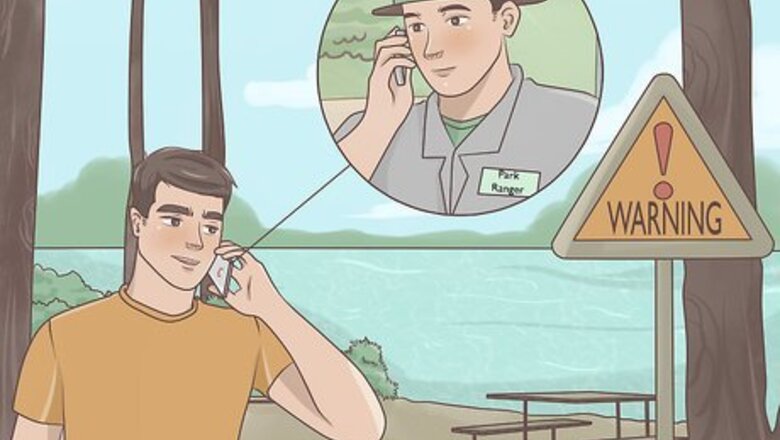
views
Choosing Your Swimming Spot
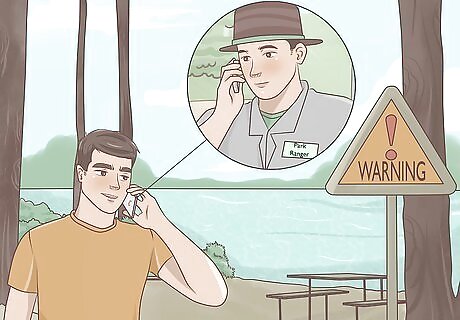
Investigate new swimming areas for a history of swimmer’s itch. Many factors contribute to an area having a high risk of swimmer’s itch. If a particular park or lake has a recent history of the infection, you should consider avoiding it. There are several ways to check if an area has a swimmer’s itch problem.Did you know? Swimmer’s itch is caused by hypersensitivity to a particular type of parasite in the water. It always develops after repeated exposures, so you won’t get swimmer’s itch the first time you swim in contaminated water. Check online for posted warnings about swimmer’s itch in the area. Look for any signs in the area. Contact a local park ranger and ask if swimmer’s itch has been reported lately. Swimmer’s itch is not considered a health emergency, so health officials often don’t keep records on cases. Check local newspapers instead for any recent cases before swimming.
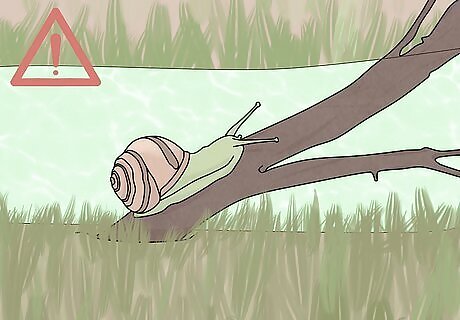
Avoid areas where waterfowl or snails are present. The parasites that cause swimmer’s itch transfer between snails and water birds like geese and ducks. The presence of these animals indicates a risk of swimmer’s itch. Survey swimming areas before going in the water to see if there are snails or waterfowl present. Avoid spots with heavy populations. You don't necessarily have to avoid every place geese or ducks are. The risk of swimmer's itch is high if these animals are close to the shoreline. If you see that these birds are staying further away from the swimming area, it is safer to swim.
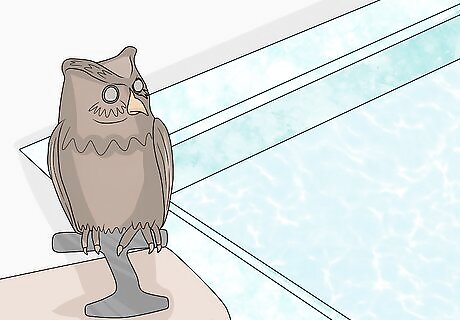
Keep ducks and geese away from your swimming area. Don’t attract these animals to areas where people swim. They can bring parasites near swimmers and lead to swimmer’s itch infections. Don’t feed ducks or geese. This makes them approach people, and they could bring parasites with them. If you own a dock or swimming hole, place owl or hawk statues around to keep ducks and geese away. Geese also usually stay away from reflective objects. Hanging reflective streamers around your swimming area can keep them away. Remember to remove these when you're done if this isn't your property.
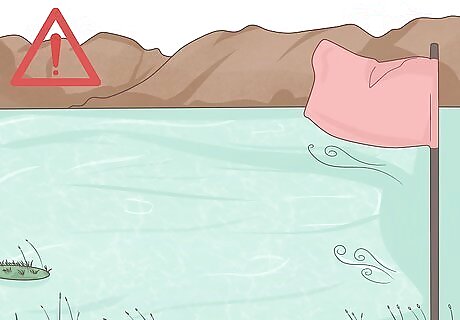
Avoid swimming if the wind is blowing towards the shore. This pushes more wildlife, including the parasites that cause swimmer’s itch, towards the shore where people are swimming. If there is a strong wind blowing towards the shore, consider skipping your swim for a few hours until the wind dies down. Heavy waves also bring parasites towards the shore. Look for calmer water.
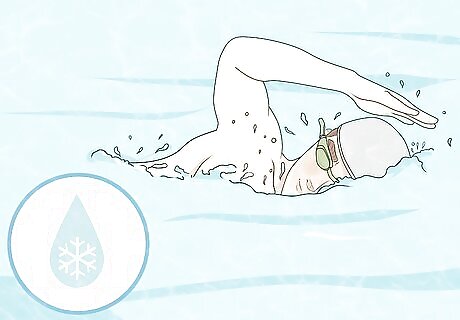
Swim in cooler water. The organisms that cause swimmer's itch thrive in warmer water. Usually the risk is highest during the months of peak water temperature, which occurs in July and August. Consider avoiding freshwater lakes during these months, or take extra precautions while swimming to protect yourself. Peak water temperature varies depending on the location, but it is usually over 70 °F (21 °C). Cooler areas have less of a risk for swimmer's itch.
Preventing Infections While Swimming
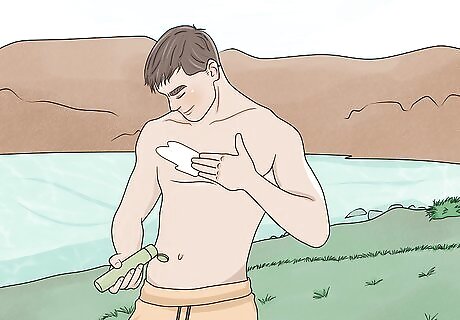
Apply waterproof sunblock to all your exposed skin. Swimmer's itch usually only affects areas not covered by your bathing suit. A gel barrier makes it difficult for the swimmer’s itch parasites to attach to your skin. Covering all your exposed skin with sunblock or a similar waterproof gel greatly reduces your risk of swimmer’s itch. Another type of waterproof gel substance will also work, like petroleum jelly.
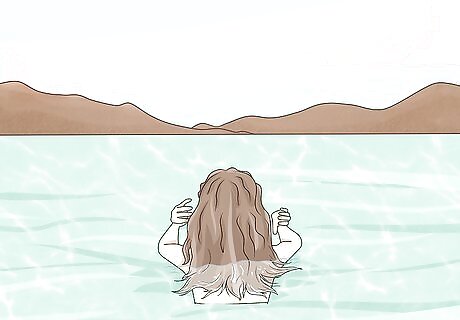
Head to deeper waters if you’re a strong swimmer. Swimmer’s itch is much more common along the shoreline, where people kick up the dirt and sand where the parasites could be hiding. Heading further out reduces the chance that you’ll come in contact with the parasites. This method is only suggested for strong swimmers. If you have children or group members who aren’t skilled swimmers, do not encourage them to go out further than they’re comfortable. This is extremely dangerous.
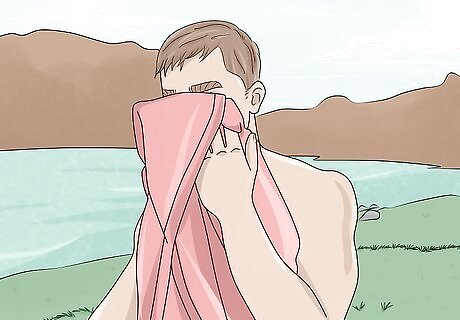
Dry yourself with a towel before the water evaporates. Parasites hide in the water droplets left on your body after you exit the water. When they evaporate, the parasites have a path into your skin. Wipe away all water droplets immediately after exiting the water to prevent this. Wipe harder than you typically would. Just patting yourself dry could leave some parasites behind. Instead, use a wiping motion to push the parasites off your skin.
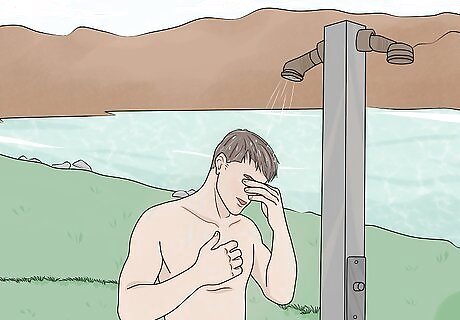
Rinse yourself with clean water after swimming. This washes any remaining parasites off your body so they can’t cause swimmer’s itch. The best option would be taking a full shower after swimming to clean yourself fully. If you’re unable to take a full shower, use the rinsing stations that are usually available near swimming areas. Run water over all the areas that your bathing suit doesn’t cover. Dry yourself by wiping your skin firmly with a towel to push off any organisms that still remain on your skin.
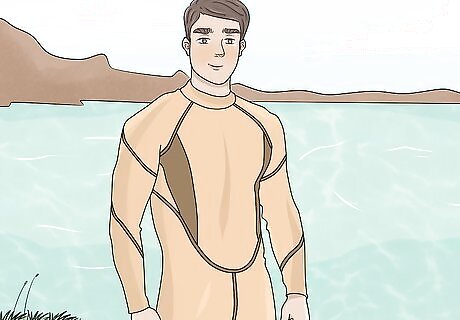
Consider wearing a wetsuit to swim. Swimmer’s itch usually only affects exposed skin. Areas covered by bathing suits prevent the parasites from reaching your skin. If an area is prone to swimmer’s itch or you aren’t sure, consider wearing a full-body wetsuit. This covers your entire body except for your head and feet.
















Comments
0 comment